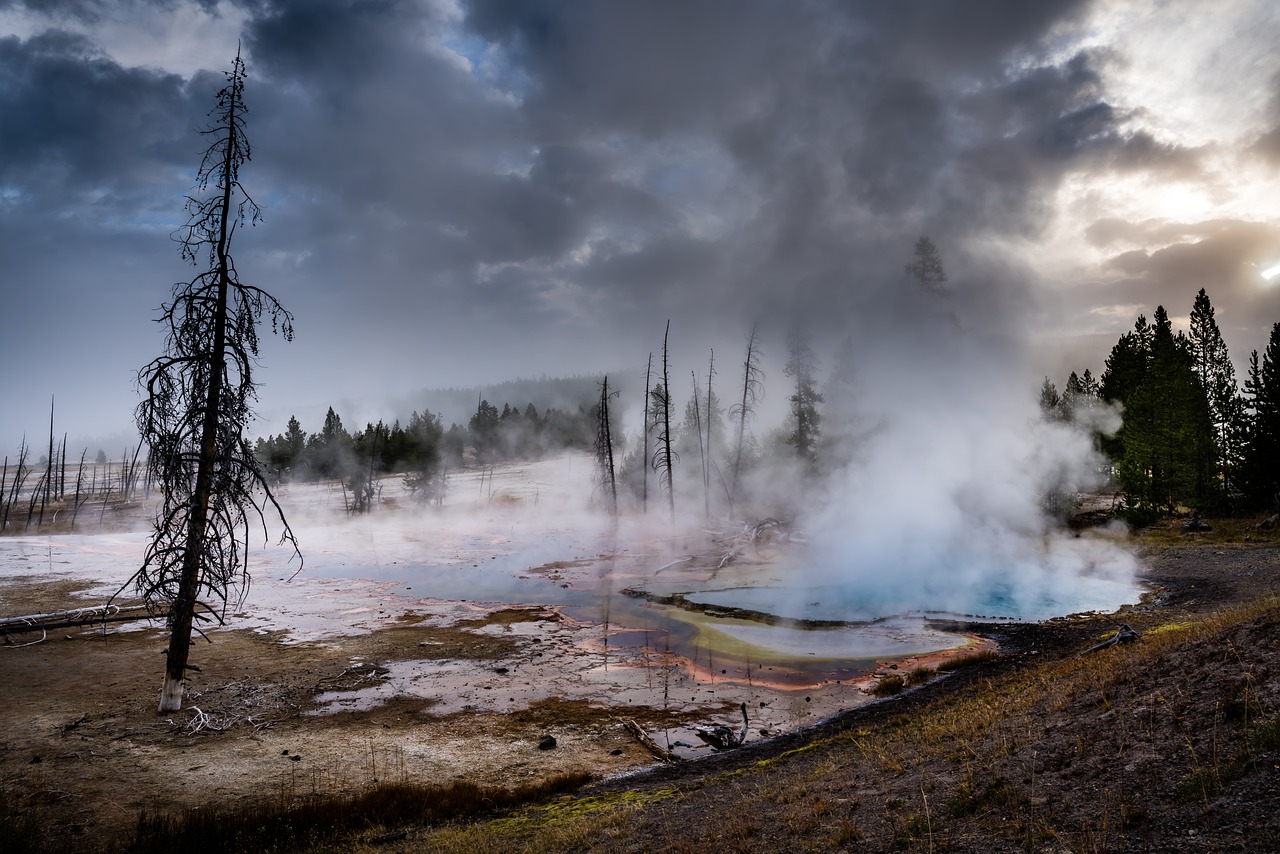
Yellowstone National Park stands as an iconic symbol of America’s natural beauty and diversity. Nestled primarily in the state of Wyoming, but also stretching into parts of Montana and Idaho, this sprawling wilderness sanctuary is a testament to the raw power and breathtaking beauty of nature. Established as the world’s first national park in 1872, Yellowstone continues to captivate millions of visitors each year with its awe-inspiring geothermal features, abundant wildlife, and pristine landscapes. In this comprehensive guide, we’ll delve into the wonders of Yellowstone, uncovering its rich history, unique geology, and must-see attractions.
- A Geological Marvel:
- Yellowstone’s unique geological landscape is characterized by its geothermal features, including geysers, hot springs, mud pots, and fumaroles.
- The park sits atop the Yellowstone Caldera, one of the largest supervolcanoes on Earth, which last erupted approximately 640,000 years ago.
- Iconic geothermal features such as Old Faithful, Grand Prismatic Spring, and Mammoth Hot Springs showcase the park’s volcanic origins and draw visitors from around the globe.
- Wildlife Wonderland:
- Yellowstone is home to an impressive array of wildlife, including iconic species such as bison, elk, grizzly bears, wolves, and bighorn sheep.
- The park’s diverse ecosystems provide vital habitat for these animals, offering visitors unparalleled opportunities for wildlife viewing and photography.
- Visitors should exercise caution and maintain a safe distance from wildlife to ensure both their own safety and the animals’ well-being.
- Outdoor Recreation:
- With over 2.2 million acres of wilderness to explore, Yellowstone offers endless opportunities for outdoor recreation, including hiking, camping, fishing, and wildlife watching.
- The park boasts a vast network of hiking trails, ranging from easy strolls to challenging backcountry treks, allowing visitors to immerse themselves in the park’s natural beauty.
- Camping facilities are available throughout the park, offering both frontcountry and backcountry camping options for visitors looking to spend a night under the stars.
- Cultural and Historical Significance:
- Yellowstone’s rich cultural and historical heritage dates back thousands of years, with evidence of human presence dating back over 11,000 years.
- The park’s indigenous peoples, including the Shoshone, Bannock, and Crow tribes, have long-standing cultural connections to the land and its resources.
- European American exploration and settlement in the 19th century led to the establishment of Yellowstone as the world’s first national park, paving the way for the conservation movement.
- Planning Your Visit:
- Before embarking on your Yellowstone adventure, it’s essential to plan ahead and familiarize yourself with park regulations, safety guidelines, and seasonal considerations.
- The park is open year-round, but accessibility varies depending on the season, with summer being the peak visitor season and winter offering unique opportunities for snowshoeing, cross-country skiing, and wildlife viewing.
- Visitors should be prepared for changing weather conditions, unpredictable wildlife encounters, and limited services, particularly in remote areas of the park.
Yellowstone National Park stands as a testament to the enduring power and beauty of the natural world. From its awe-inspiring geothermal features to its abundant wildlife and rich cultural heritage, Yellowstone offers visitors a once-in-a-lifetime opportunity to connect with nature and experience the wonders of the wild. Whether you’re exploring its iconic landmarks, embarking on a backcountry adventure, or simply soaking in the serenity of its landscapes, Yellowstone is sure to leave a lasting impression on all who visit. So pack your bags, hit the trails, and prepare to be amazed by the majesty of Yellowstone National Park.